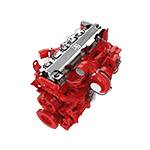Aug . 20, 2024 01:35 Back to list
Cost of Rear Brake Drums and Installation Services Explained
Understanding the Cost of Rear Brake Drums
When it comes to vehicle maintenance, understanding the components and their costs can save you both time and money. One crucial component of a vehicle's braking system is the rear brake drum. If you’re facing issues with your brakes or simply planning for future maintenance, it’s important to know how much rear brake drums typically cost and what factors influence their price.
What Are Rear Brake Drums?
Rear brake drums are cylindrical components found in a drum brake system, which is one of the two primary types of brake systems used in vehicles, the other being disc brakes. When the driver presses the brake pedal, brake shoes inside the drum are pushed outward against the inner surface of the drum, creating friction that slows down or stops the vehicle. Despite being less common in modern vehicles, rear brake drums are still used in many cars, especially those with smaller diameters or entry-level models.
Average Costs
The cost of rear brake drums can vary widely based on several factors, including the make and model of the vehicle, brand, and whether you are purchasing them from a dealership or an aftermarket supplier. On average, you can expect to pay between $30 to $150 for each rear brake drum. However, for high-performance vehicles or specialized parts, prices can escalate to $200 or more per drum.
In addition to the cost of the drums themselves, you should also consider the costs associated with installation. If you choose to have a professional mechanic perform the installation, labor costs can range from $50 to $100 per hour, depending on the garage and location. Typically, replacing rear brake drums will take about 2 to 4 hours, bringing the total cost, including parts and labor, to anywhere from $150 to $500 or more.
Factors Influencing Prices
how much are rear brake drums

Several factors can influence the price of rear brake drums
1. Vehicle Make and Model Certain makes and models may have higher costs due to the availability of parts or the complexity of installation. For instance, luxury or performance vehicles often have pricier components, including brake parts.
2. Quality of Parts Aftermarket parts often come at a lower price, but they can vary significantly in quality. Original Equipment Manufacturer (OEM) parts are typically more expensive but are made to the same specifications as the parts used in the vehicle at the factory.
3. Labor Costs Prices can differ based on geographic location and the shop’s reputation. Urban areas may have higher labor rates compared to rural areas.
4. Additional Components If your rear brake drums have been worn down, it’s often advisable to replace other related components such as brake shoes, springs, and hardware. This can increase the overall cost of the job but can also prevent future issues.
Conclusion
Maintaining your vehicle’s braking system is essential for safety and performance. While the costs associated with rear brake drums can vary based on numerous factors, understanding these elements helps you make informed decisions regarding your vehicle’s repair and maintenance. Whether you’re looking to do a DIY replacement or seeking professional help, being aware of the potential costs can help you budget accordingly. Regular maintenance and timely replacement of brake components not only ensure your car runs smoothly but also enhances your overall driving safety. Always consult with a trusted mechanic to assess your braking system and get accurate estimates specific to your vehicle’s needs.
-
ROR Web Development: Build Fast, Scalable, Secure Apps
NewsAug.17,2025
-
Scania Brake Drums: OEM Quality for Optimal Safety & Durability
NewsAug.16,2025
-
R.V.I: Advanced Remote Visual Inspection for Precision
NewsAug.15,2025
-
Discover HYUNDA: Innovative Vehicles, Equipment & Solutions
NewsAug.14,2025
-
R.V.I: Unlock Advanced Insights & Real-time Performance
NewsAug.13,2025
-
Kamaz Brake Drum: Durable & Reliable for Heavy Duty Trucks
NewsAug.12,2025
